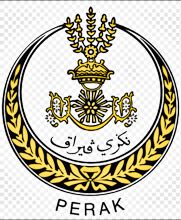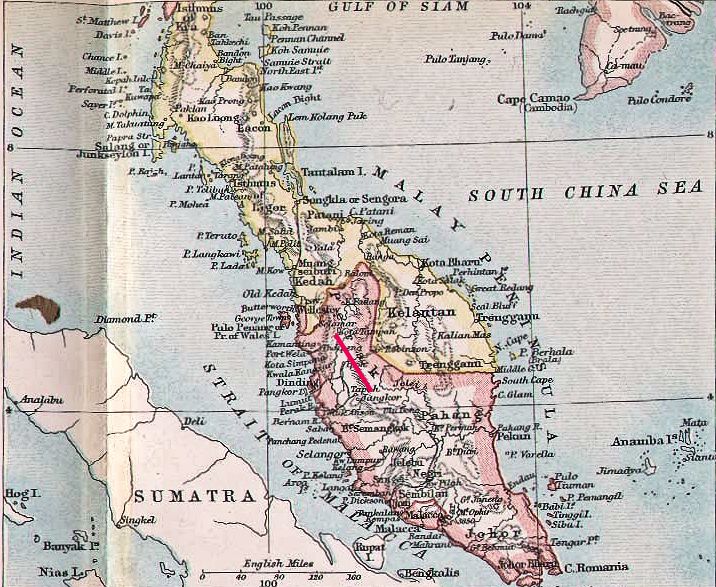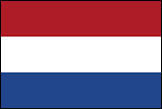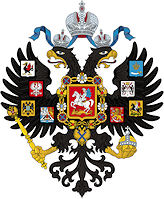

Zitierweise / cite as:
Payer, Alois <1944 - >: Chronik Thailands = กาลานุกรมสยามประเทศไทย. -- Chronik 1825. -- Fassung vom 2016-04-12. -- URL: http://www.payer.de/thailandchronik/chronik1825.htm
Erstmals publiziert: 2013-07-01
Überarbeitungen: 2016-04-12 [Ergänzungen] ; 2015-10-13 [Ergänzungen] ; 2015-09-12 [Ergänzungen] ; 2015-07-07 [Ergänzungen] ; 2015-06-18 [Ergänzungen] ; 2015-05-09 [Teilung des Kapitels] ; 2015-05-08 [Ergänzungen] ; 2015-04-22 [Ergänzungen] ; 2015-03-16 [Ergänzungen] ; 2015-03-04 [Ergänzungen] ; 2015-01-24 [Ergänzungen] ; 2014-12-15 [Ergänzungen] ; 2014-11-13 [Ergänzungen] ; 2014-11-04 [Ergänzungen] ; 2014-10-27 [Ergänzungen] ; 2014-09-21 [Ergänzungen] ; 2014-08-20 [Ergänzungen] ; 2014-03-26 [Ergänzungen] ; 2014-03-08 [Ergänzungen] ; 2014-02-26 [Ergänzungen] ; 2014-01-13 [Ergänzungen] ; 2013-12-20 [Ergänzungen] ; 2013-12-05 [Ergänzungen] ; 2013-11-25 [Ergänzungen] ; 2013-11-05 [Ergänzungen] ; 2013-10-11 [Ergänzungen] ; 2013-09-28 [Ergänzungen] ; 2013-09-23 [Ergänzungen] ; 2013-09-17 [Ergänzungen] ; 2013-09-02 [Ergänzungen] ; 2013-08-23 [Ergänzungen] ; 2013-08-21 [Ergänzungen] ; 2013-08-14 [Ergänzungen] ; 2013-08-11 [Ergänzungen] ; 2013-07-13 [Ergänzungen] ; 2013-07-10 [Ergänzungen] ; 2013-07-08 [Ergänzungen]
©opyright: Dieser Text steht der
Allgemeinheit zur Verfügung. Eine Verwertung in Publikationen, die über übliche
Zitate hinausgeht, bedarf der ausdrücklichen Genehmigung des Herausgebers.
Dieser Text ist Teil der Abteilung
Thailand von
Tüpfli's Global Village Library
ช้างตายทั้งตัวเอาใบบัวปิดไม่มิด
|
Gewidmet meiner lieben Frau Margarete Payer die seit unserem ersten Besuch in Thailand 1974 mit mir die Liebe zu den und die Sorge um die Bewohner Thailands teilt. |
|
Bei thailändischen Statistiken muss man mit allen Fehlerquellen rechnen, die in folgendem Werk beschrieben sind:
Die Statistikdiagramme geben also meistens eher qualitative als korrekte quantitative Beziehungen wieder.
|
1825 - 1830

Sultan Abdullah Muadzam Shah Ibni Almarhum Sultan Abdul Malik Mansur Shah ist Sultan von Perak (ڨيرق). Ihm gelingt es, sich vom Joch Siams zu befreien.

Abb.: Lage von Perak (ڨيرق)
[Bildquelle: Constables Hand Atlas of India, 1893. -- Pl. 59]
1825
Die Hofastrologen Ramas III. notieren eine Anzahl schlechter Vorzeichen:
"Thursday, the fourth day of the waxing moon of the tenth month, in the morning, showing of two suns which pursued each other until mid-day, then circles amounted three or four around the sun. The eleventh day of the waning moon, apparition in the afternoon of two suns which run after each other until the day falls .... Manifestation of comets. ... Tidal waves which lift boats to a height exceeding the spire of the highest stupas."
[Zitiert in: Mayoury Ngaosyvathn [ມະຍຸຣີ ເຫງົ້າສຼີວັດທະນາ] ; Pheuiphanh Ngaosyvathn [ເຜີຍພັນ ເຫງົ້າສຼີວັດທະນາ] <1946 - >: Paths to conflagration : fifty years of diplomacy and warfare in Laos, Thailand, and Vietnam, 1778-1828. -- Ithaca, N.Y. : Cornell Univ., 1998. -- 270 S. ; 26 cm. -- (Studies on Southeast Asia ; 24). -- ISBN 0-87727-723-0. -- S. 75, Anm. 62]
Abb.: Nebensonne, Österreich, 2006
[Bildquelle: Christoph Trautwein / Wikimedia. -- GNU FDLicense]
1825

Rama III. lässt eine revidierte Version der ตำราพิชยสงคราม [Lehrbuch des Siegs im Krieg] erarbeiten, "um die buddhistische Religion wie eine Steinsäule zu erhalten" und um das Königreich Siam "zu einem sicheren Platz für die herausragende buddhistische Religion zu machen bis zum Ende der 5.000 Jahre [die der Buddhismus in diesem Zeitalter bestehen wird], um bei der Erlangung von Glück zu erziehen und ernähren buddhistische Mönche, gelehrte Brahmanen und das Volk."
1825

Prinz Paramanuchit Chinorot (สมเด็จพระมหาสมณเจ้า กรมพระปรมานุชิตชิโนรส, 1790 - 1853) vollendet die Pathamasambodhikatha (ปฐมสมโพธิกถา) in Pali über das Leben des Buddha
Abb.: Einbandtitel einer modernen Ausgabe
1825

Die Chronik von Luang Prabang (ຫຼວງພະບາງ) vermeldet einen Kometen (COMET C/1825 N1) sowie ein schweres Erdbeben:
"the appearance of a comet, turning its tail in the Eastern direction. Earthquake of an unprecedented gravity. The most steep heights of Pha Een, Pha Theung, Pha Sieng Kha, Pha Ho, Pha Hong, Pha Nam Ta Nang Oi have nearly disappeared." [Zitiert in: Mayoury Ngaosyvathn [ມະຍຸຣີ ເຫງົ້າສຼີວັດທະນາ] ; Pheuiphanh Ngaosyvathn [ເຜີຍພັນ ເຫງົ້າສຼີວັດທະນາ] <1946 - >: Paths to conflagration : fifty years of diplomacy and warfare in Laos, Thailand, and Vietnam, 1778-1828. -- Ithaca, N.Y. : Cornell Univ., 1998. -- 270 S. ; 26 cm. -- (Studies on Southeast Asia ; 24). -- ISBN 0-87727-723-0. -- S. 75, Anm. 62]
1825 - 1916

Geschätzte chinesische Bevölkerung Siams:
Abb.: Geschätzte chinesische Bevölkerung Siams (in Tausend und % der Gesamtbevölkerung), 1825 - 1916
[Datenquelle: Skinner (1957), S. 79]
1825 - 1830

Diponegoro-Aufstand in Java (Indonesien).
Abb.: Prinz Diponegoro, 1835
[Bildquelle: Wikipedia. -- Public domain]
Abb.: Lage von Java
[Bildquelle: OpenStreetMap. -- Creative Commons Lizenz (Namensnennung, share alike)]
"The Java War or Diponegoro War was fought in Java between 1825 and 1830. It started as a rebellion led by Prince Diponegoro (1785 - 1855). The proximate cause was the Dutch decision to build a road across a piece of his property that contained his parents' tomb. Among other causes was a sense of betrayal by the Dutch felt by members of the Javanese aristocratic families, as they were no longer able to rent land at high prices. Also, the succession of the throne in Yogyakarta was disputed: Diponegoro was the oldest son, but as his mother was not the queen, he did not have any right to succeed his father. The troops of Prince Diponegoro were very successful in the beginning, controlling the middle of Java and besieging Yogyakarta. Furthermore the Javanese population was supportive of Prince Diponegoro's cause, whereas the Dutch colonial authorities were initially very indecisive.
However, as the Java war prolonged, Prince Diponegoro had difficulties in maintaining the numbers of his troops.
The Dutch colonial army, however, was able to fill its ranks with troops from Sulawesi, and later on from the Netherlands. The Dutch commander, General de Kock (1779 - 1845), was able to end the siege of Yogyakarta on September 25, 1825.
Prince Diponegoro started a fierce guerrilla war and it was not until 1827 that the Dutch army gained the upper hand.
It is estimated that 200,000[1] died over the course of the conflict, 8,000 being Dutch. The rebellion finally ended in 1830, after Prince Diponegoro was tricked into entering Dutch custody near Magelang, believing he was there for negotiations for a possible cease-fire, and exiled to Manado on the island of Sulawesi.
Because of the large number of European soldiers who perished in the war, the Dutch government decided to recruit African soldiers in Gold Coast, the so-called "Belanda Hitam" ("Black Dutch")."
[Quelle: http://en.wikipedia.org/wiki/Java_War. -- Zugriff am 2011-11-27]
1825

Chaophraya Nikonbodin (To / Ng Taotoh / Huang Dao / 黄道) (เจ้าพระยานิกรบดินทร์ (โต), 1784 - 1864) läst in Bangkok Wat Kalayanamitr Varamahavihara (วัดกัลยาณมิตรวรมหาวิหาร) bauen und schenkt es Rama III.
Abb.: Lage von Wat Kalayanamitr Varamahavihara (วัดกัลยาณมิตรวรมหาวิหาร)
[Bildquelle: OpenStreetMap. -- Creative Commons Lizenz (Namensnennung, share alike)]
Abb.: Wat Kalayanamitr Varamahavihara (วัดกัลยาณมิตรวรมหาวิหาร), 2014
[Bildquelle: กสิณธร ราชโอรส / Wikimedia. -- Creative Commons Lizenz (Namensnennung, share alike)]
1825
Volkszählung mit Tätowierung der Fron- und Militärdienstpflichtigen.
1825
Eine chinesische Theatertruppe erkrankt in Kathu (กะทู้), Phuket (ภูเก็ต). Durch ein vegetarisches Ritual werden sie anscheinend wieder gesund. Dies ist der Beginn des Vegetarian Festival (九皇爺, เทศกาลกินเจ) in Phuket. Es heißt auch กินผัก ("Gemüse essen")
Abb.: Lage von Phuket (ภูเก็ต)
[Bildquelle: OpenStreetMap. -- Creative Commons Lizenz (Namensnennung, share alike)]
Abb.: Vegetarian Festival (九皇爺, เทศกาลกินเจ), Phuket (ภูเก็ต), 2009
[Bildquelle: Binder.donedat. -- http://www.flickr.com/photos/binderdonedat/4041786813/. -- Zugriff am 2012-05-03. -- Creative Commons Lizenz (Namensnennung, keine Bearbeitung)]
Abb.: Vegetarian Festival (九皇爺, เทศกาลกินเจ), Phuket (ภูเก็ต), 2009
[Bildquelle: herr_S. -- http://www.flickr.com/photos/herr_s/4124052473/. -- Zugriff am 2012-05-03. -- Creative Commons Lizenz (Namensnennung, keine kommerzielle Nutzung, share alike)]
"Celebration in Thailand In Thailand, this festival is called Tesagan Gin Je เทศกาลกินเจ, the Vegetarian Festival. It is celebrated throughout the entire country, but the festivities are at their height in Phuket (ภูเก็ต), where about 35% of the population is Chinese. It attracts crowds of spectators because of many of the unusual religious rituals that are performed. Many religious devotees will slash themselves with swords, pierce their cheeks with sharp objects and commit other painful acts.
JeDuring a period of nine days, those who are participating in the festival dress all in white and gin je กินเจ, which has come to be translated as abstinence from eating meat, poultry, seafood, and dairy products. Vendors and proprietors of restaurants indicate that je food is for sale at their establishments by putting a yellow flag out with the word เจ (je) written on it in red. However, technically, only food prepared in the sacred kitchen of the Chinese temple (in Thailand, called san jao ศาลเจ้า or ahm อ๊ำ) is je, as it must undergo a series of rituals before it can be given that name.
Mah songMah song ม้าทรง are the people who invite the spirits of gods to possess their bodies. Mah ม้า is the word for horse in Thai, and the name mah song refers to how the spirits of the gods use the bodies of these people as a vehicle, as one rides a horse. Only pure, unmarried men or women without families of their own can become mah song. At the temple they undergo a series of rituals to protect them for the duration of the festival, during which flagellation and self-mutilation is practiced. The mah song tradition doesn't exist in China and is believed to have been adopted from the Indian festival of Thaipusam (தைப்பூசம்).
The festivities in Phuket include a procession of mah song wearing elaborate costumes who pierce their cheeks and tongues with all manner of things, including swords, banners, machine guns, table lamps, and flowers. While the face is the most common area pierced, some also pierce their arms with pins and fishhooks. Teams of people accompany the mah song to keep their wounds clean and to help support the heavier piercings. It is believed that while they are possessed the mah song will not feel any pain. They can also be seen shaking their heads back and forth continually, and usually do not seem to "see" their surroundings. At the temple during the festival there is also firewalking and blade-ladder climbing. While large crowds of people gather to watch, the entranced mah song distribute blessed candy and pieces of orange cloth with Chinese characters printed on them, yang ยังต์ for good luck."
[Quelle: http://en.wikipedia.org/wiki/Vegetarian_festival. -- Zugriff am 2012-05-03]
1825-Sommer


Der Gouverneur von Chumphon (ชุมพร) zieht mit einer großen Truppe gegen die seit kurzem britische Stadt Tenasserim (တနင်္သာရီမြို့), schändet die britische Flagge, plündert die Stadt und nimmt viele Bewohner als Sklaven gefangen. Eine Truppe von indischen Soldaten der British East India Company greift die siamesischen Eindringlinge an, tötet einige der siamesischen Soldaten, nimm 124 Siamesen gefangen und befreit die meisten gefangenen Birmanen.
Abb.: Lage von Stadt Tenasserim (တနင်္သာရီမြို့) und Chumphon (ชุมพร)
[Bildquelle: OpenStreetMap. -- Creative Commons Lizenz (Namensnennung, share alike)]Siam unternimmt 1824/1825 mehrere Raubzüge in die Tenasserim-Region (ဏၚ်ကသဳ) und nimmt insgesamt 2.000 bis 3.000 Personen als Sklaven gefangen.
1825


Penang schlägt der British East India Company in Madras (மதராஸ்) einen Austausch mit Siam vor: Siam erhält wieder das ehemals siamesische, nun birmanische Tenasserim (တနင်္သာရီတိုင်းဒေသကြီး / ဏၚ်ကသဳ / ตะนาวศรี / تانه ساري)
Abb.: Vorgeschlagener Gebietsaustausch. Querlinie: 8°40'
[Bildquelle: Scottish Geographical Magazine, 1886. -- Public domain]
"in exchange for an engagement to avoid all future interference with the states on the Malayan Peninsula from the latitude of eight degrees forty north, which includes the island of Junk Ceylon, a post which might be turned to great account ... if such a scheme were practicable and a settlement formed at Junk Ceylon [Phuket - ภูเก็ต] it would certainly become the emporium of the east and rival the most flourishing of our establishments." [Zitiert in: Mackay, Colin <1936 - >: A history of Phuket and the surrounding region. -- Bangkok : White Lotus, 2013. -- 438 S. : Ill. ; 25 cm. -- ISBN 978-974-480-195-1. -- S. ]
Für die Verhandlungen mit Siam wird Henry Burney (1792-1845) ausgewählt. Kurz bevor er abreisen kann, kommt aus Madras die Absage: Tenasserim und der Hafen von Mergui (မြိတ်မြို့ / ဗိက် / มะริด) haben denselben Wert wie Phuket. Man glaube auch nicht, dass Siam auf Phuket und die malaiischen Staaten verzichten werde.
1825

Zum Beispiel: Nachdem er zweimal erfolgreich für die britische Honourable East India Company nach Bombay (Mumbai, Indien) und China gesegelt war, verbrennt der Ostindienfahrer "Kent" auf hoher See.
Abb.: Kent / von William John Huggins (1781 - 1845), ca. 1825
[Bildquelle: Wikipedia. -- Public domain]
1825-01

Penang: Die britische East India Company sendet Henry Burney (1792-1845) als Sonderbotschafter (und Spion) nach Ligor (Nakhon Si Thammarat - อาณาจักรนครศรีธรรมราช) und den umliegenden siamesischen Provinzen. Burney ist der einzige Brite in Penang, der Thai sprechen kann. Burney hat die Aufgabe, Siams Einstellung zum Krieg Großbritanniens gegen Burma und die Annektion Tenasserims zu erkunden. Auch soll er erkunden, wie die Einstellung des Raja von Ligor zu Kedah ist, und was er von der Aushandlung eines Handelsvertrags mit Siam hält. Auch soll Burney herausfinden, ob der Raja von Ligor ein halb-unabhängiger Herrscher ist oder nur ein Befehlsempfänger Siams. Burney berichtet, dass der Raja nur ein Beamter Siams ist, allerdings mit sehr großer Macht, dass er sich aber nicht wagt, mit Europäern zu verhandeln. Burney bestätigt auch John Crawfurd's (1783 - 1868) Berichte aus Singapur, dass Siam nicht überzeugt sei, dass Großbritannien im Krieg mit Burma steht und dabei siegreich ist.
1825-03

Aus dem Journal von David Richardson (1796 - 1846) (im British Museum):
"The first Lao letter arrived at Moulmein [မတ်မလီု] in March 1825, soon after its occupation by British forces early in the First Anglo-Burmese war, and six months before the arrival in Bangkok of the British emissary, Henry Burney [1792-1845]. It purported to be from the Chief of Zimmay [Chiang Mai - เชียงใหม่] Shans, lordly styling himself "ruler of fifty-seven provinces and possessor of the richest throne in the East" . . . requesting to be informed of his [the British General's] "circumstances" to which a friendly but non-committal answer was returned. Who exactly sent this letter is not clear, for two of the three Lao Jaomeuangs [เจ้าเมือง] [rulers] died in that year. Yet, it seems unlikely that it could have been sent on Siamese orders at so early a stage in the war with the Burmese, and "the richest throne in the East" would not have been a title the Siamese could approve emanating from one of their tributaries. The next letter arrived at Moulmein in 1828." [Zitiert in: Mayoury Ngaosyvathn [ມະຍຸຣີ ເຫງົ້າສຼີວັດທະນາ] ; Pheuiphanh Ngaosyvathn [ເຜີຍພັນ ເຫງົ້າສຼີວັດທະນາ] <1946 - >: Paths to conflagration : fifty years of diplomacy and warfare in Laos, Thailand, and Vietnam, 1778-1828. -- Ithaca, N.Y. : Cornell Univ., 1998. -- 270 S. ; 26 cm. -- (Studies on Southeast Asia ; 24). -- ISBN 0-87727-723-0. -- S. 120f.]
Abb.: Lage von Chiang Mai (เชียงใหม่) und Moulmein [မတ်မလီု]
[Bildquelle: OpenStreetMap. -- Creative Commons Lizenz (Namensnennung, share alike)]
1825-03-04 - 1829-03-04

John Quincy Adams (1767 - 1848) ist Präsident der USA.
Abb.: John Quincy Adams 1818 / von Gilbert Stuart (1755 - 1828)
[Bildquelle: Wikipedia. -- Public domain9
1825-04-29

Einäscherung von König Rama II. (gestorben: 1824-07-21). In Bangkok sind drei Armee-Divisionen anwesend, offiziell wegen des Pomps für die Bestattungszeremonien.
1825-05

"In May 1825, when Anou [Anuvong (ສົມເດັຈພຣະເຈົ້າອານຸວົງສ໌ - เจ้าอนุวงศ์, 1767 - 1829), König von Vientiane (ວຽງຈັນ)]came down for Rama II's funeral ceremony, his entourage was requisitioned by Rama III to provide laborers to fell sugar palm trees: a filthy, difficult job. Then these Lao laborers were ordered to drag the trees by hand from Suphanburi [สุพรรณบุรี] to Samut Prakan [สมุทรปรากา]. The leader commanded to direct this forced labor crew in 1826 was none other than the crown prince of the kingdom of Vientiane, Anou's son Chao Ratsavong [ເຈົ້າຣາຊວົງສ໌]." [Quelle: Mayoury Ngaosyvathn [ມະຍຸຣີ ເຫງົ້າສຼີວັດທະນາ] ; Pheuiphanh Ngaosyvathn [ເຜີຍພັນ ເຫງົ້າສຼີວັດທະນາ] <1946 - >: Paths to conflagration : fifty years of diplomacy and warfare in Laos, Thailand, and Vietnam, 1778-1828. -- Ithaca, N.Y. : Cornell Univ., 1998. -- 270 S. ; 26 cm. -- (Studies on Southeast Asia ; 24). -- ISBN 0-87727-723-0. -- S. 142]
Abb.: Lage von Suphanburi [สุพรรณบุรี] und Samut Prakan [สมุทรปรากา]
[Bildquelle: OpenStreetMap. -- Creative Commons Lizenz (Namensnennung, share alike)]
1825-05 - 1825-06

"An incident which occurred in May and June of 1825 gives a more vivid picture of the Governor’s [Robert Fullerton, 1733 - 1831] character than pages of description. The Raja of Ligor [Nakhon Si Thammarat - อาณาจักรนครศรีธรรมราช] had collected a fleet to conquer Selangor [سلاڠور], and the Penang Council obtained some evidence—later shown to be erroneous—that he intended also to attack Penang. The town was put in a state of defence, but Fullerton was far from satisfied with such passive measures. Only the most vehement expostulations on the part of his Council induced him very reluctantly to forego his intention of sailing to Ligor and destroying the Siamese fleet before it left harbour." [Quelle: Mills, L. A. (Lennox Algernon) <1896 - 1968>: British Malaya, 1824-1867 : with appendix by C. O. Blagden. -- Singapore : Methodist Publ., 1925. -- 338 S. ; 25 cm. -- S. 137]
Abb.: Lage von Ligor [Lakon, Nakhon Si Thammarat - อาณาจักรนครศรีธรรมราช], Penang und Selangor [سلاڠور]
[Bildquelle: Constable's Hand Atlas of India, 1893]
1825-07 - 1827-02

Siamesische Gesandtschaft zum Kaiser von China: informiert über den neuen König Rama III., bringt Tributgaben und einen Brief Ramas III. an den Kaiser von China. Die Gesandtschaft kehrt mit Geschenken des Kaisers von China zurück sowie einem Brief des Kaisers, in dem er Rama III. als König Siams bestätigt.
Während der Regierungszeit Ramas III. gibt es 13 Tribut-Gesandtschaften zum Kaiser von China.
Siam darf mit jeder Tribut-Mission zwei große Dschunken schicken, die in Kanton zollfrei handeln dürfen. Die siamesischen Tribute bestehen hauptsächlich in Zinn und Zucker, die Geschenke des Kaisers von China in Seide.
1825-07 - 1825-08

Penang: Die britische East India Company sendet Henry Burney (1792-1845) als Sonderbotschafter (und Spion) nochmals nach Ligor (Nakhon Si Thammarat - อาณาจักรนครศรีธรรมราช), damit er mit dem dortigen Raja verhandle. Der Raja sagt, dass er seine Absicht aufgegeben habe, Selangor auf dem Seeweg anzugreifen, dass er aber 3000 Soldaten auf dem Landweg nach Perak schickt, um dem dortigen Raja den erbetenen Beistand gegen Selangor zu geben. Burney weigert sich, Perak als siamesischen Vasallen anzuerkennen, und warnt den Raja vor einem Angriff auf Selangor, dem Großbritannien nicht untätig zuschauen werde. (In Wirklichkeit ist die East India Company nicht bereit, Perak beizustehen). Der Raja lässt sich bluffen und verspricht, keine Soldaten nach Perak zu schicken.
1825-07-31

Unterzeichnung eines Vorvertrags von Henry Burney (1792-1845) und dem Raja von Ligor (Nakhon Si Thammarat - อาณาจักรนครศรีธรรมราช). Der Vorvertrag soll als Grundlage für Verhandlungen mit Siam dienen.
Abb.: Lage von Ligor (Nakhon Si Thammarat - อาณาจักรนครศรีธรรมราช), Kedah [قدح], Perak [ڤيرق] und Selangor [سلاڠور]
[Bildquelle: Constable's hand atlas of India, 1893]
"The terms of the Treaty were as follows:—-
- The Raja of Ligor [Nakhon Si Thammarat - อาณาจักรนครศรีธรรมราช] promised that no Siamese force should go to Perak [ڤيرق] or Selangor [سلاڠور] by land or sea, or should settle there. The Company declared that it had " no desire to occupy Perak or to interfere with its government,"· and promised to remove Raja Hassan, to prevent the Sultan of Selangor from disturbing the peace of Perak, and to settle the quarrel between Selangor and Ligor.
- The Company declared that it " entertained no desire to interfere with the Government of Queda [Kedah - قدح]." If the ex-Sultan were restored, the Penang Council promised that he should send the Bunga Mas [بوڠا مس] [ต้นไม้เงินต้นไม้ทอง] triennially, and $4,000 annually, to Bangkok. The Raja of Ligor promised that if the Emperor of Siam restored the Sultan, he would withdraw his opposition, and would not attack Kedah by land or sea. In this treaty, as throughout the course of his mission to Bangkok, Burney adopted the policy of trying to restore the ex-Sultan by securing the co-operation of the Raja of Ligor, the man who had been chiefly instrumental in dethroning him.
- Other clauses of the treaty provided for mutual assistance in suppressing piracy and for the negotiation of a commercial treaty at Bangkok.
In a despatch to the Penang Council Burney defended his departure from the Company’s former policy of strict non-intervention in Malayan affairs. He pointed out that this course could no longer be followed with advantage, and predicted that interference would not entail a war with Siam or the other complications feared by the Indian Government. "
[Quelle: Mills, L. A. (Lennox Algernon) <1896 - 1968>: British Malaya, 1824-1867 : with appendix by C. O. Blagden. -- Singapore : Methodist Publ., 1925. -- 338 S. ; 25 cm. -- S. 142]
1825-08-20

Im Namen der britischen East India Company schließt John Anderson (1795 - 1845) einen Vertrag mit dem Sultanat Selangor (سلاڠور). Darin verpflichtet sich Sultan Ibrahim, niemals Perak (ڤيرق) anzugreifen oder sich in dessen innere Angelegenheiten einzumischen.
1825-09-06

Im Namen der britischen East India Company schließt John Anderson (1795 - 1845) einen Vertrag mit dem Sultanat Perak (ڤيرق) . In diesem Vertrag anerkennt Perak den Bernam River als Grenze zu Selangor (سلاڠور) an . Perak verpflichtet sich, niemals Selangor (سلاڠور) anzugreifen oder sich in dessen innere Angelegenheiten einzumischen.
Abb.: Lage des Bernam River als Grenze zwischen Selangor (سلاڠور) und Perak (ڤيرق) (Staatsgrenzen: 1998)
[Bildquelle: CIA. -- Public domain]
1825-09-15

Der Sultan von Perak [ڤيرق] bittet die britische East India Company seinen Staat gegen bescheidene jährliche Pension zu annektieren. Seine Begründung:
"Perak could never be tranquill without the superintending control of an European government." [Zitiert in: Mills, L. A. (Lennox Algernon) <1896 - 1968>: British Malaya, 1824-1867 : with appendix by C. O. Blagden. -- Singapore : Methodist Publ., 1925. -- 338 S. ; 25 cm. -- S. 143]
1825-09
Himmelserscheinung. Die einen halten es für einen Kometen, die anderen für einen Nāga (นาค)
Es handelt sich vermutlich um Comet Pons (C/1825 N1, 1825 IV), der von August bis Dezember 1825 außergewöhnlich gut sichtbar ist.
Abb.: Nāga (นาค) (Schlange)
[Bildquelle: Wikimedia. -- Public domain]
1825-09-27

Großbritannien: Eröffnung der weltweit ersten Dampfeisenbahnlinie zwischen Stockton und Darlington. Beginn des Eisenbahnzeitalters.
Abb.: Erster Eisenbahnzug 1825
[Public domain]
1825-10
Der Raja von Ligor (Nakhon Si Thammarat - อาณาจักรนครศรีธรรมราช) sendet als "Gesandtschaft" Streitkräfte nach Perak [ڤيرق], um den dortigen Sultan beim Regieren zu unterstützen. Der Governor von Panang, Robert Fullerton (1733 - 1831) , fordert den Rückzug der Truppen. Der Raja antwortet mit Ausflüchten und behält die Truppen weiterhin in Perak.
1825-12-01 - 1855-03-02

Nikolaus I. (Николай I Павлович, 1796 - 1855) ist Zar von Russland.
Abb.: Nikolaus I. (Николай I Павлович) mit Gattin (links)
[Bildquelle: Adolf Ladurner (1799 - 1855) / Wikimedia. -- Public domain]
1825-12-22

Henry Burney (1792-1845) in einem Brief über seine Verhandlungen am siamesischen Königshof:
"I enquired how many guns, and what size did the king require. The Minister gravely replied one thousand, some of brass, some of iron, some of six cubits length and some of four and two cubits, and calculated to carry balls of a size which he indicated by holding out his hand in the form of either twenty-four pound shot or six pound guns. These would be considered by the king as the greatest proof of our good will and friendship." [Zitiert in: Mayoury Ngaosyvathn [ມະຍຸຣີ ເຫງົ້າສຼີວັດທະນາ] ; Pheuiphanh Ngaosyvathn [ເຜີຍພັນ ເຫງົ້າສຼີວັດທະນາ] <1946 - >: Paths to conflagration : fifty years of diplomacy and warfare in Laos, Thailand, and Vietnam, 1778-1828. -- Ithaca, N.Y. : Cornell Univ., 1998. -- 270 S. ; 26 cm. -- (Studies on Southeast Asia ; 24). -- ISBN 0-87727-723-0. -- S. 119]
ausführlich: http://www.payer.de/thailandchronik/ressourcen.htm